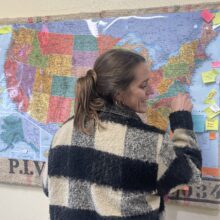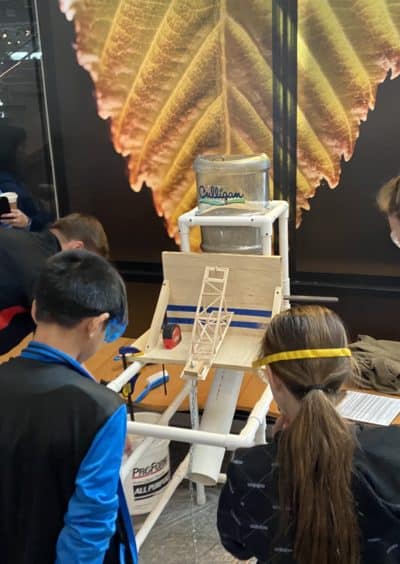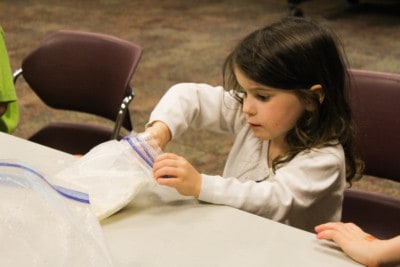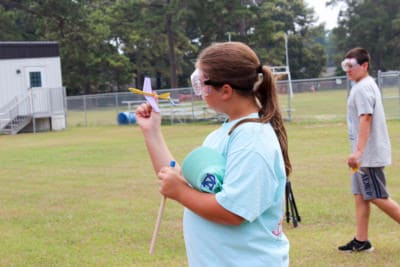Imagine yourself in a kindergarten classroom, staring outside the window into a small green space enclosed within the school. Not playground-sized — the space is bigger than your classroom and is adorned with brightly colored picnic tables and homemade bird houses. Daffodils and lenten rose peep up from below a tree. The only thing reminding you of the classroom you are sitting in is a dry erase board situated along the brick wall outside.
This is what Hidden Valley Elementary School’s outdoor classroom looks like. The space received a makeover thanks to Out Teach, an organization looking to unlock student performance with experimental learning outdoors.
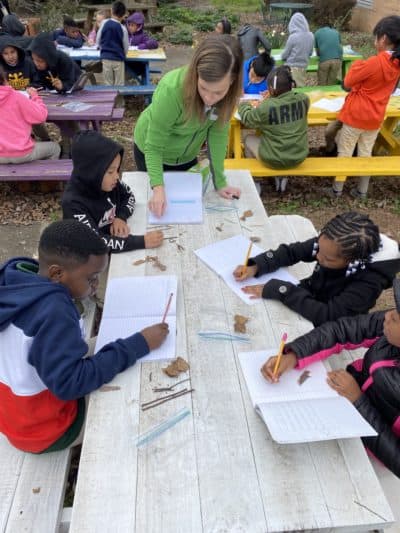

Out Teach provided this space with root viewers, enhanced the picnic tables with games and pollinator information, built sustainable garden boxes, and purchased a garden shed. Providing for an outdoor learning space is just one of the three components of the nonprofit’s programming.
What is Out Teach?
Out Teach is currently working in 14 schools in the Charlotte-Mecklenburg area. Out Teach hopes to increase curiosity, engagement, and overall outcomes for students by delivering professional learning programs to educators and building outdoor learning labs for schools.
The three main components of the Out Teach model include training teachers, continuous educator support through online coaching of those teachers, and building outdoor classrooms. They believe experiential learning can accelerate comprehension for all students, no matter their circumstance outside school. Using an outdoor classroom connects lessons in any subject to the real world, which has proven results. All schools participating are Title 1 schools.
We visited Hidden Valley when Out Teach instructional coach, Allie Graybeal, was preparing for her day in the outdoor lab. Graybeal spent eight years as a fifth grade teacher. She believes in science integration and that anything can be taught using nature.
“Taking your students outside is highly effective, and it’s highly engaging, and it really doesn’t require anything more than what you currently have. It’s just kind of shifting your mind to thinking about outdoors being an outdoor classroom,” she said.
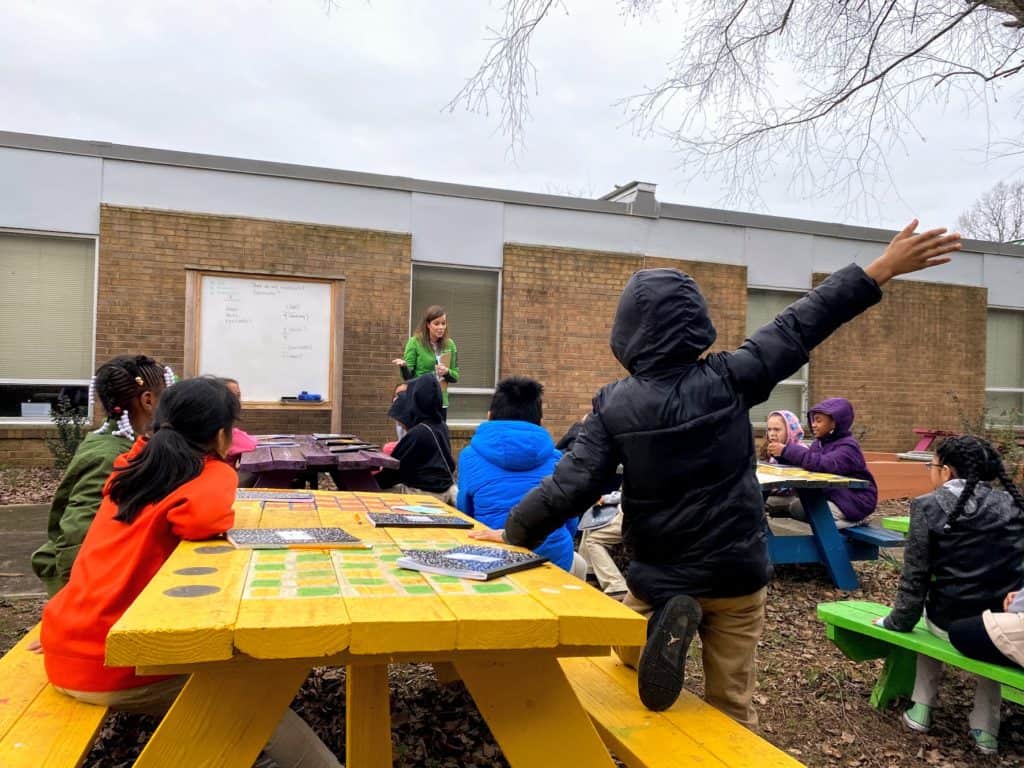

This is Graybeal’s first visit to Hidden Valley this year, and she is in the beginning stages of the Out Teach process with this specific class. Following the model of “show, don’t tell,” Graybeal demonstrates a lesson with the standard provided by the teacher.
The Hidden Valley teacher is able to see Graybeal in action, working side-by-side with her. This is essentially professional development during school hours. The class benefits from an outdoor lesson while the teacher receives coaching on experiential learning techniques.
Today, the students are working on reviewing fractions. After going over the rules of the outdoor learning lab, Graybeal asks the students to gather five items found on the ground that can fit in the palm of their hand.
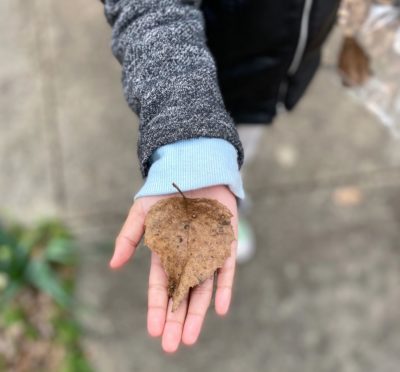

Graybeal calls these five things their “explorer piece.” Students are taking articles from nature, using them as manipulatives, and creating fractions out of a whole. A science integration piece of this math lesson had them classify and categorize their items by description. This is just one of six classes Grayebeal will work with today in the outdoor lab.
How does this work for the teacher?
Once a school has agreed to partner with Out Teach, the cohort of educators involved can be selected in a variety of ways, from individuals volunteering to principals selecting them. Graybeal says once educators see how the space can be used, they are much more comfortable with jumping on board.
“When you take these teachers into the outdoor space, and you show them how to create effective, engaging, standard-aligned lessons, you find that more and more teachers are interested. That’s typically what happens, is it will start off as principal selection, [and then] kind of word of mouth spreads on how effective and engaging the lessons are, and then you get volunteers for the next year,” she said.
After the participating class has been identified, Graybeal begins communication with an email about a month prior to her visit with the local teacher. Once the date is set, they discuss the desired lesson plan and Graybeal aligns it with the standard taught at the time of her visit. Both teacher and outdoor instructor have the ability to email with questions or clarifications.
Her next stage of work is the initial visit and where we find ourselves today. Graybeal is meeting this third grade class at Hidden Valley for the first time. She is equally as focused on the students as she is the teacher, since this is a lesson for the educator working in a new learning space. She will be showing how a standard that’s being taught in the classroom can effectively be taught outdoors and will showcase new management practices.
After school, Graybeal meets with all participating teachers to debrief. The local teacher completes a reflection and has the opportunity to describe what kind of support they will need to continue using the outdoor classroom.
A second visit is scheduled where the outdoor instructor observes a lesson by the local teacher and offers growth feedback. The third visit is a collaborative lesson planning meeting where the teacher and outdoor instructor work to create a standard aligned lesson in the outdoor space. The fourth and final visit is an observation to see how much the local teacher has grown with outdoor experiential learning. The hope is that these teachers will use the outdoor classroom anywhere from once a month to every two weeks.
Out Teach works with many schools and a learning lab can look different at each one. Participating schools can apply for what is known as a “Big Dig” where Out Teach partners with a corporate sponsor and a six month planning process takes place before construction begins. Students submit designs for what they want the outdoor lab to have, and elements of those designs make their way into the grand plan.
Leadership from both the school and Out Teach determine the optimal space, a contractor is selected to build anything requiring a permit, and a timeline is established. A day is chosen as the “Big Dig” build day where students, families, members of Out Teach, and the corporate sponsor join together to assemble the outdoor learning lab.
Duke Energy partnered to help build Governors Village STEM Academy in Charlotte last year. One hundred and five volunteers joined in to assemble the 6,200 square foot learning lab.

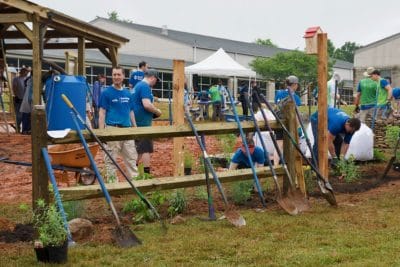
Volunteers at Governor’s Village STEM Academy. Courtesy of Out Teach 
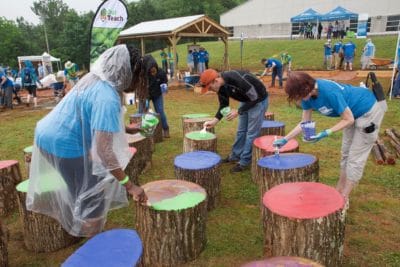
Painting stools in the outdoor classroom. Courtesy of Out Teach 
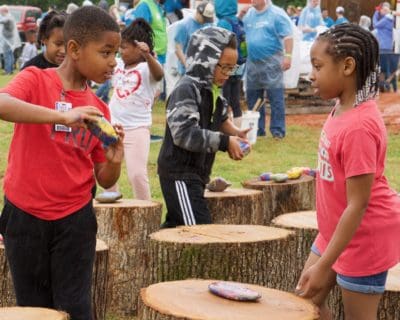
Student volunteers on Big Dig Day. Courtesy of Out Teach 
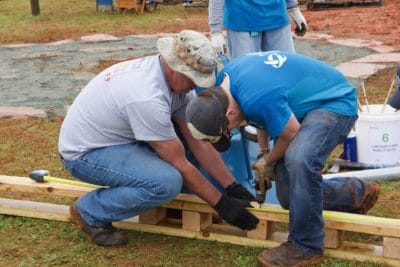
Governors’ Village insect hotel. Courtesy of Out Teach
“We are proud of our partnership with Out Teach in North Carolina,” said Shawn Heath, president, Duke Energy Foundation. “It is incredibly gratifying to see the hard work and dedication of the students, community leaders and Duke Energy teammates who have worked to bring Out Teach projects to life. We believe that investing in education is an investment in North Carolina’s future and look forward to our third collaboration with Out Teach in 2020.”
The Big Dig is just the beginning for some as Out Teach offers one-on-one coaching to help the school learn to shift daily practices to incorporate outdoor learning. Working to add more science into the day is what it’s all about.
Editor’s note: The Duke Energy Foundation supports the work of EducationNC.

